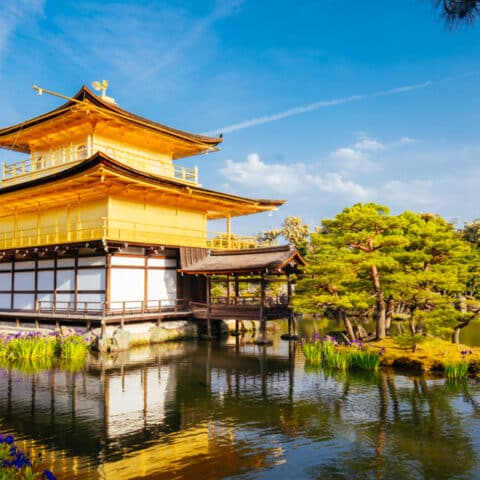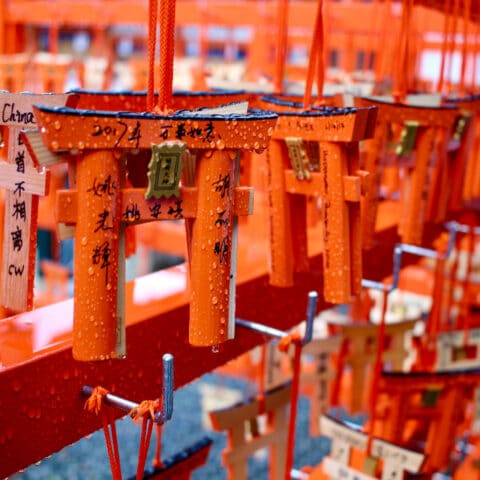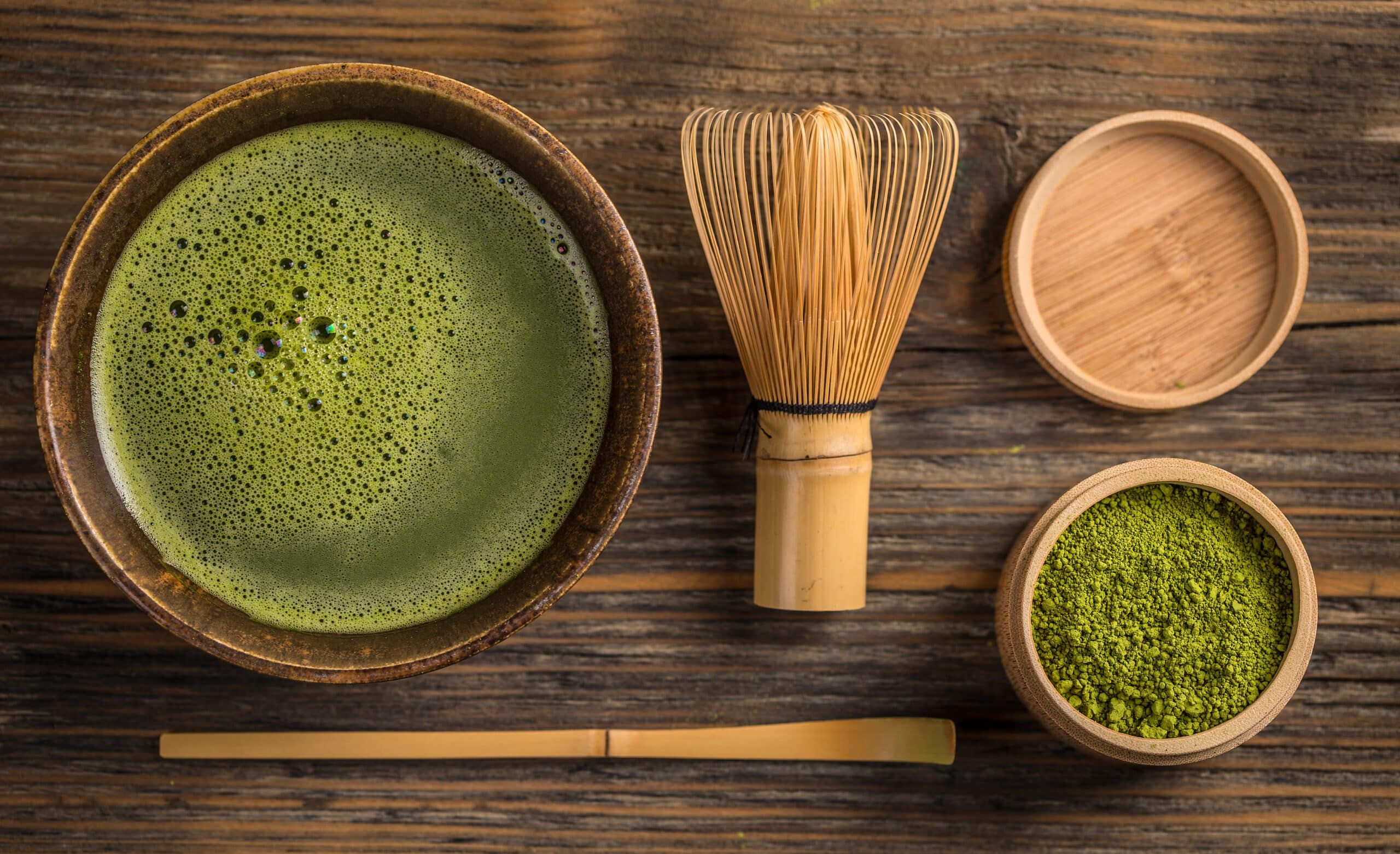
Japan’s famous green tea, matcha, has captured the hearts and palates of tea enthusiasts around the world. More than just a beverage, this drink is a cultural symbol that embodies the essence of Japanese traditions. From its vibrant green color to its unique preparation methods, it is an art form that requires appreciation and understanding. Matcha is the finely ground powder of green tea leaves, which is grown as well as brewed and prepared in a different way compared to regular green tea.
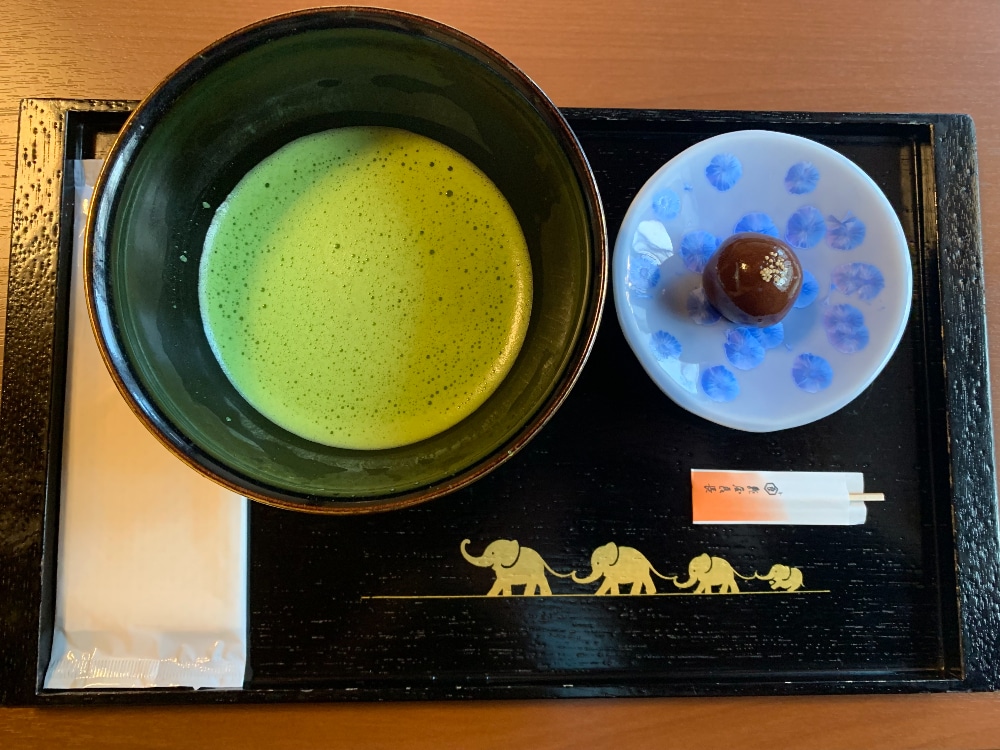
Matcha paired with sweet during tea ceremony, Old Mitsui Family Shimogamo Villa, Kyoto, Japan
Photo Credit: Hannah Fulton
The History and Cultivation of Matcha
The beverage’s history can be traced back to China during the Tang Dynasty, where green tea leaves were ground into a fine powder and whisked with hot water. In the 12th century, Zen Buddhist monks brought this powdered tea to Japan, where it made a new home and created a deep cultural significance as it gained popularity. Highly caffeinated, with a similar amount of caffeine as coffee, it also contains the L-theanine compound, which promotes alertness but also helps avoid the crash in energy levels that can follow caffeine consumption. Buddhist monks have used this in their practice, as it helps them stay awake during their long periods of meditation, and the preparation process can also be a very meditational ritual as well. Over the centuries and into the present, matcha has become an integral part of Japanese tea ceremonies, a ritual that celebrates harmony, respect, and tranquility.
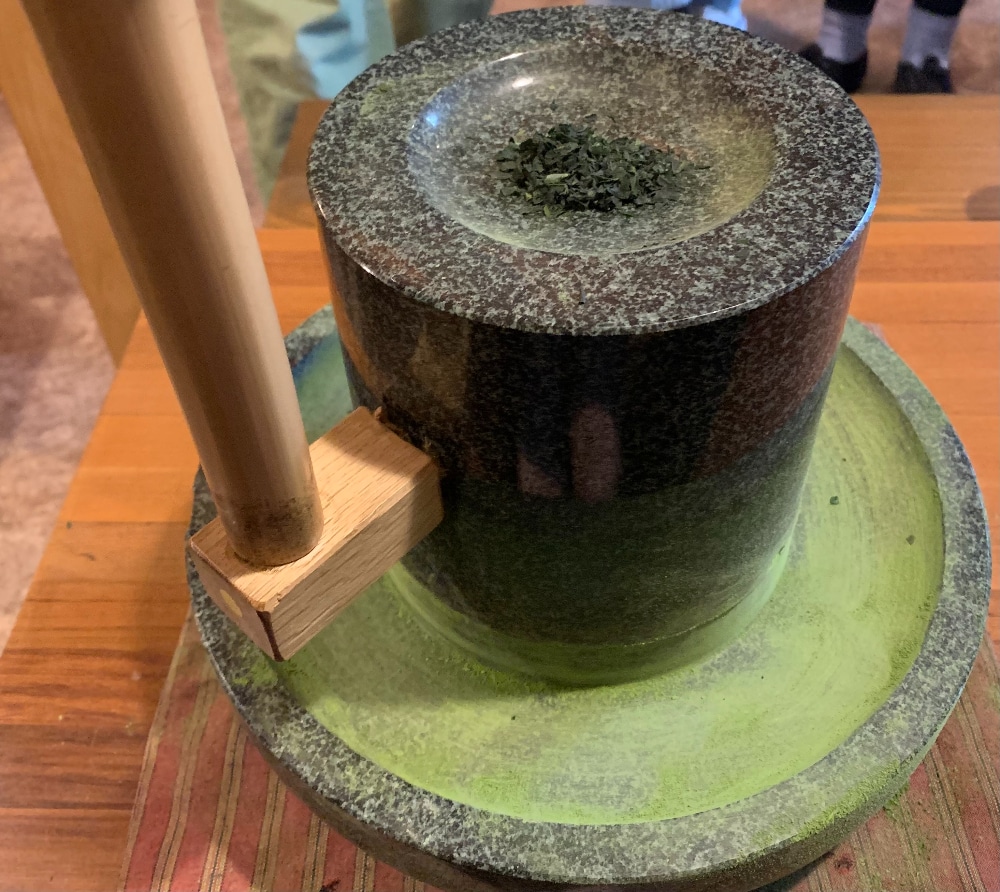
Granite stone mill for grinding tea leaves, Uji, Kyoto, Japan
Photo Credit: Hannah Fulton
Cultivation and Processing
Cultivation is a meticulous process that involves shading the tea plants for several weeks before harvest. This shading stimulates the growth of chlorophyll and enhances the flavor and vibrant green color of the leaves. After harvesting, the leaves are steamed, dried, and ground into a fine powder using traditional granite stone mills. This labor-intensive process ensures that every sip of matcha is a testament to the artistry behind its creation.
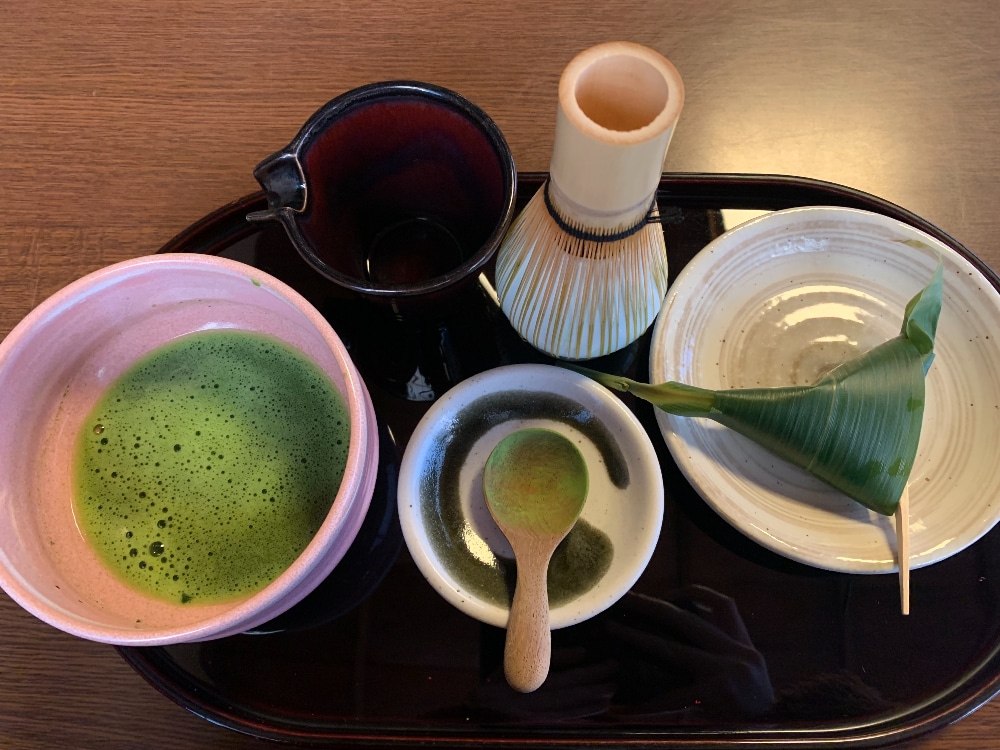
Tea utensils including bamboo whisk, tea scoop, and tea bowl as well as matcha and sweet, Sabo Maeda, Nijo Castle, Kyoto, Japan
Photo Credit: Hannah Fulton
The Preparation Ritual
One of the most enchanting aspects of matcha is its ceremonial preparation. To fully appreciate it, one must embrace the mindful ritual that accompanies its making. The utensils used in the tea ceremony, such as the bamboo whisk (chasen), the tea scoop (chashaku), and the tea bowl (chawan), all hold deep symbolism and are carefully chosen to enhance the experience. Preparation involves sifting a small amount of the powdered tea into a bowl, adding hot water, and whisking the mixture vigorously until a frothy layer forms on the surface. The resulting vibrant green liquid is then sipped slowly, allowing the flavors to unfold and transport the drinker to a state of tranquility. The act of preparing and consuming matcha encourages mindfulness, focus, and a deep appreciation for the present moment.
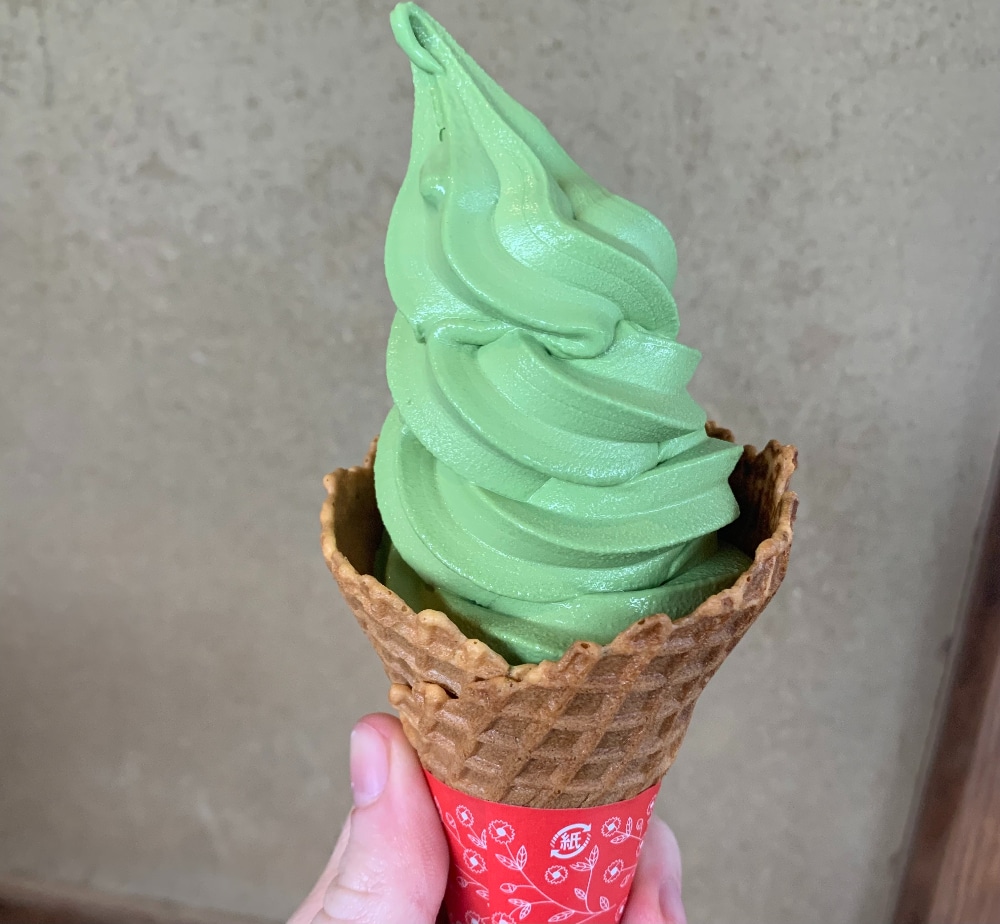
Matcha Soft Serve Ice Cream, Kinkakuji, Kyoto, Japan
Photo Credit: Hannah Fulton
Taste and Health Benefits
Matcha possesses a unique flavor profile that is both grassy and slightly sweet, with a pleasant vegetal undertone. Its taste is distinct from other green teas due to the higher concentration of amino acids, specifically L-theanine, which provides a natural umami taste and a sense of calm alertness. In addition to the taste, it offers numerous health benefits. It is rich in antioxidants, which help combat oxidative stress and promote overall well-being. This magical drink also contains catechins, a type of antioxidant known for its potential anti-cancer properties. Moreover, it can boost metabolism, aid in weight management, and support cardiovascular health. Having become increasingly more versatile, not only can you enjoy it in its traditional form, but you can also make it into a latte by adding hot or cold milk and a mild sweetener such as honey if you prefer. It can also be enjoyed as a supplement to your favorite smoothie recipe, since the flavor is not overpowering, which means that it can also be found in countless delicious desserts, such as mochi and ice cream!
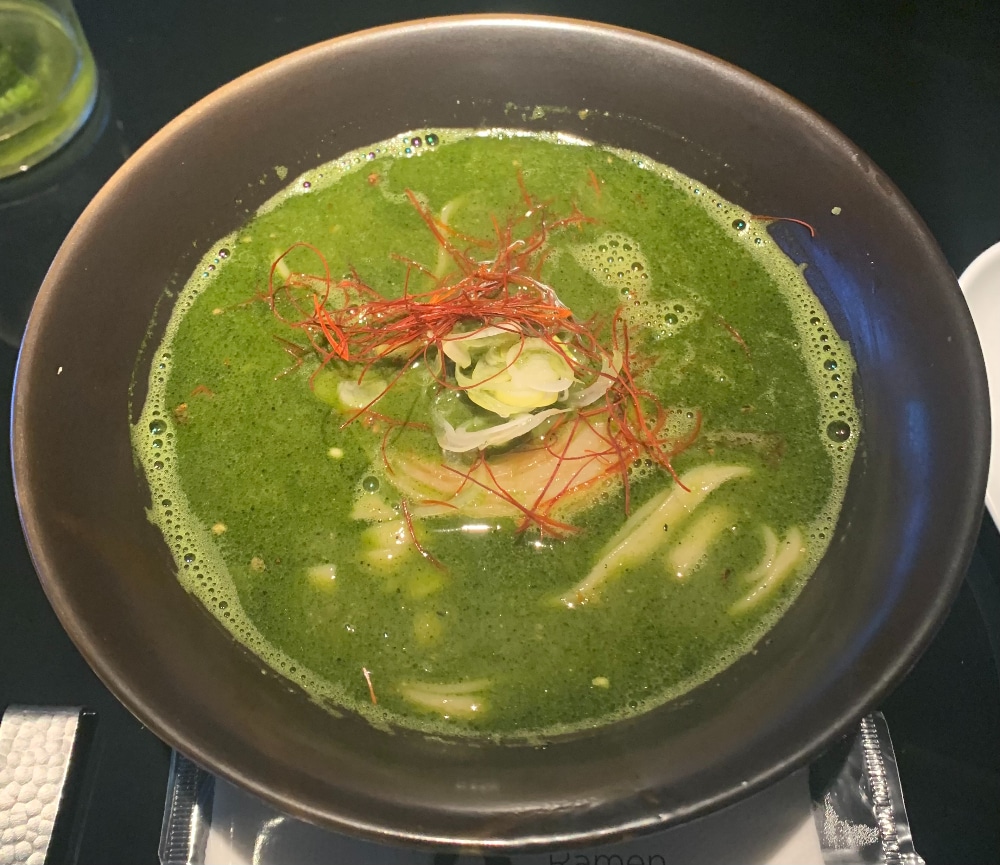
Vegan Matcha Ramen, Vegan Ramen UZU Kyoto, Japan
Photo Credit: Hannah Fulton
Matcha-Flavored Food and Snacks Everywhere You Go
Upon arriving in Japan, you will be welcomed by matcha-flavored snacks almost everywhere you look, such as chocolates and drinks. However, we also highly encourage you to visit Uji City, in Kyoto, also known as the Matcha capital of Japan. There you will find countless restaurants and shops that serve related items and dishes, such as matcha ramen, udon noodles, and salt. Also, keep an eye out for matcha-flavored beer! You can find this at the gift shop of Nijo Castle.
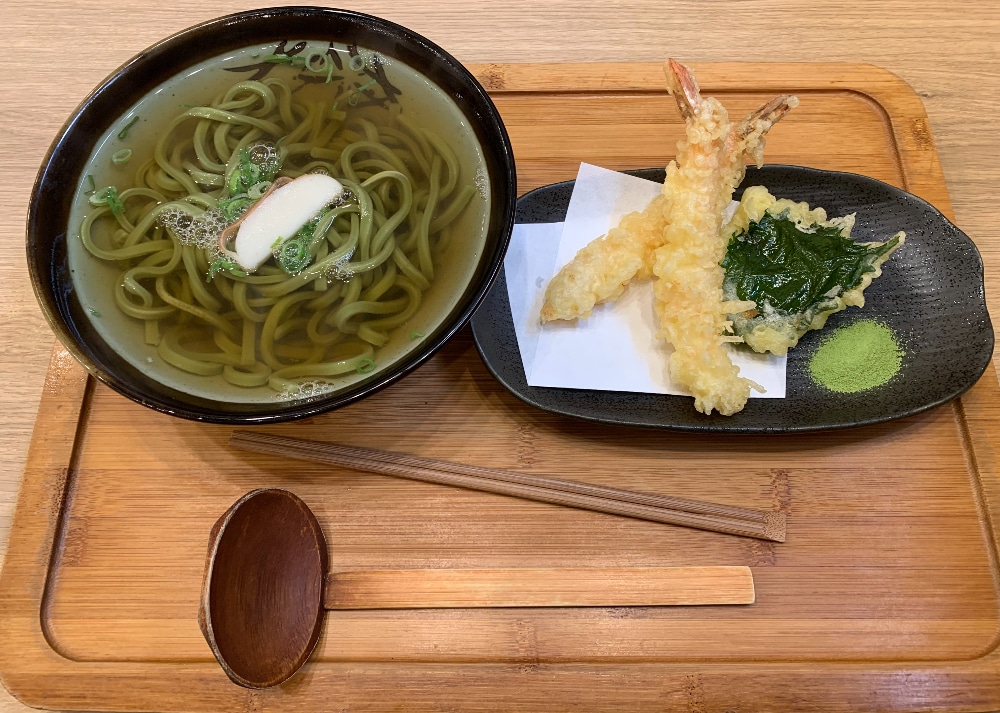
Matcha Udon and Tempura with Matcha Salt, Nakamura Udon, Uji, Kyoto, Japan
Photo Credit: Hannah Fulton
Matcha is more than just a beverage; it is a work of art that encapsulates the essence of Japanese culture and traditions. Its vibrant green hue, unique preparation ritual, and distinct flavor profile make it a truly captivating experience for tea enthusiasts worldwide. As you embark on your journey of appreciating and understanding matcha, take a moment to savor its meditative qualities, immerse yourself in the mindful preparation, and appreciate the centuries-old tradition behind each sip. Whether you enjoy matcha for its taste or its health benefits, let this exquisite green tea transport you to a world of tranquility and appreciation.
Be sure to book our Kyoto Matcha Green Tea Tour to try the best that Kyoto has to offer!
[social_warfare]


